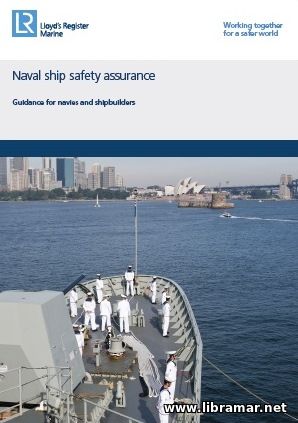 This guidance for shipbuilders and navies was published by Lloyds Register Marine. The procurement and ownership of a capital-intensive asset such as a naval ship brings with it many challenges for those involved over the project lifecycle.
Ensuring that individual responsibilities and objectives are balanced with the constraints of limited budgets; increasing public scrutiny; greater attention to, and obligations for, provision of safety; and loss in some cases of critical technical knowledge mean that having a balanced assurance process is now a fundamental requirement. Gaining this multi-faceted assurance, whether from the perspective of the nation's government, the Chief of Navy, the designer/shipbuilder, or the sailor who will take the vessel into service means that the practices and solutions used in previous projects may not deliver the necessary outcomes.
The same challenges exist for those involved with commercially operated shipping, but they have been able to meet this challenge through closer co-operation between shipowners, designers and builders, regulatory authorities and classification societies. Unfortunately, it is not feasible to simply apply the commercial process to naval ships as many of the concepts and practices do not fit the procurement processes for government-owned assets.
This has led to the evolution over the last twenty years of naval classification from a facsimile of class for commercial ships into a more nuanced assurance process, as described in this publication. This process then provides appropriate assurance to the various stakeholders that their responsibilities are being discharged...
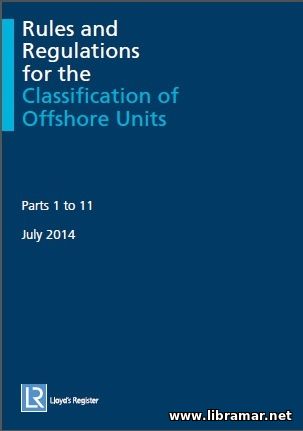 We are now presenting are all eleven parts forming the latest officially released "Rules and Regulations for the Classification of Offshore Units" developed by Lloyd's Register professionals. The reader may find a comprehensive listing of contents at the beginning of each of the parts. In this release all editorial amendments were incorporated. As mentioned above, the Rulebook consists of eleven parts.
The first part is pretty introductory and contains general regulations. In the second part the authors address the rules to be followed during the manufacture, certification and testing of materials. The functional offshore unit types and their special features have been dealt with in the third part of the publication. The other parts have been dedicated to the steel unit offshore structures, machinery of the offshore units (both main and auxiliary), electrical and control engineering, safety systems, corrosion control matters, delineated hazardous areas and fire, offshore structures constructed of concrete, descriptions of the various ship type units and, finally, production, offloading and storage of liquefied gases in bulk.
The publication will definitely be useful and practical for all offshore industry members since it provides necessary technical information and applicable requirements to the offshore units that shall be followed in order to ensure their safe and efficient operation and maintenance.
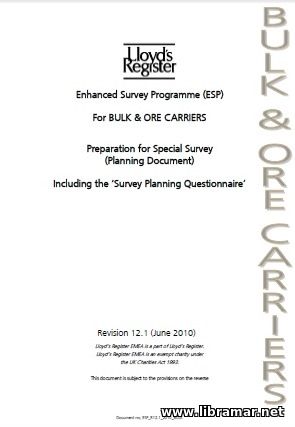 Here is the pack of official publications released by one of the leaders in classification - Lloyd's Register of Shipping; it consists of four separate booklets - enhanced survey program preparation documents and questionnaires for bulk carriers (including ore carriers), chemical tankers, oil tankers, ore bulk oil ships.
All of them were officially released by Lloyds Register in 2010. In general, each document contains general preparation guidelines, survey planning programme and questionnaire, tank testing requirements, close-up and thickness measurement requirements, table of maximum permissible diminution of individual plates, stiffeners, topside and bottom areas. The preparation for survey is one of the key aspects of maintaining the class and the survey planning questionnaire is considered one of the critical documents, accordingly.
There are examples of properly completed questionnaire and survey programme included in the contents of these booklets. The document is fully complying with the IMO Res. A744(18), IACS URs Z10.1 and Z10.4 and Lloyd's Rules. These guidelines will assist vessel owners preparing for the surveys and provide necessary info required in this regard.
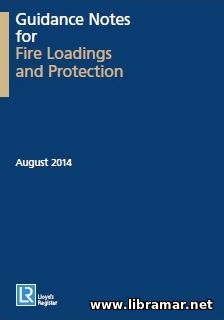 Introduction; Abbreviations and terminology; Design conditions and safety systems influencing the fire behaviour; Fire protection principles in design; Establishment of design loads; Fire mitigation measures; Fire response; References. These LR Rules require a FE, i.e. Fire and Explosion Evaluation, report to be submitted.
This report is primarily aimed to serve as the assessment of the potential blast pressures and fire loadings, on the bases of the specific fire hazards that are associated with the unit's general arrangement as well as production and process activities taking place; the operational constraints are also to be taken into account. The present Guidelines should to be treated independently of the formal Quantitative Risk Analysis (QRA); however, the input on ignition probabilities and leak scenarios usually taken from the QRA, are required.
Significant portion of the Guidelines has been dedicated to the basic principles of fire protection, measures for fire mitigation and fire response, that make one of the parts of the FEE and closely relate to any potential fire loadings. The Notes are intended to serve as a live document that may be changed without prior notice.
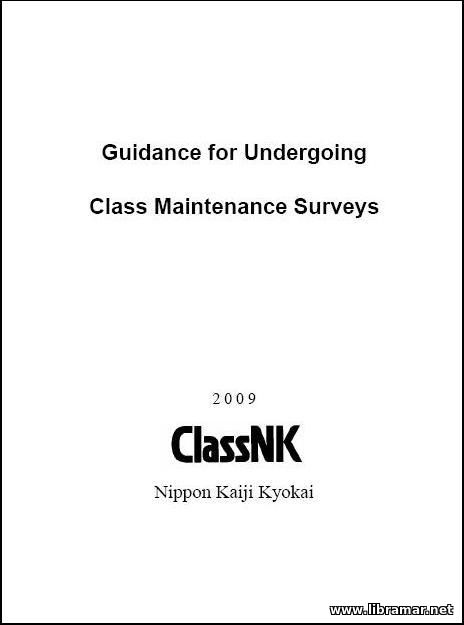 This official NK Guidance was released to be of some use for the ship owners, operators, crew members and others dealing with preparation of the vessel for the classification surveys. As the mane implies, the publication addresses the ships classed with the NK Class Society and lists the requirements of this Society, accordingly.
It will provide the point on the major survey items and all related class requirements together with the instructions on preparations that are necessary to be made in order to successfully pass alll such surveys - the documentation aspects have also been covered. The publication will also help the survey applicants, i.e. the vessel owners or their reps to carry out the surveys mentioned above fast and economically as scheduled. Of course, for details you would better refer to the applicable Rules and Guidance issued by NK.
The Guidance consists of several major chapters addressing the survey application and preparation aspects, arrangement of the surveyor's attendance, maintenance of documentation and its presentation, actual items to be surveyed, ESP (enhanced survey program), requirements applicable to the general dry cargo vessels, assessment of the coating condition of the ballast tanks, repairs etc.
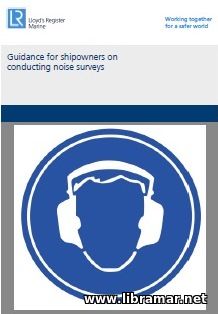 The declared purpose of the Noise Code was to avoid any possible occurrence of hazardous noise levels on board vessels and also to provide required standards for an acceptable environment for seafarers. This technical document is intended to provide the owners, yards and marine surveyors with necessary guidance on how to use the IMO Noise Code, and show how to properly conduct the noise surveys; in addition, the purpose of this guidance is to provide readers with some brief description of the relevant noise parameters.
The main body of the present report provides an explanation of the applicable technical regulations within the Code. Some checklist and data tables have been provided to aid ship owners, and others, who may be willing to better understand what exactly is required from the survey and/or to witness a noise trial. The guidebook starts with some introductory information, then there is an article describing the need for the legislation that addresses the noise levels on board the vessels, and some quick review of the sound pressure levels. The following two sections provide necessary assessment conditions and noise assessment procedures, followed by the maximum noise levels and info on sound insulation. The last chapter of this document describes the procedure for the reporting on the measured sound levels.
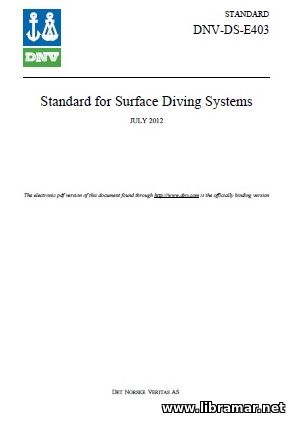 The DNV Standard no. DNV-DS-E403 includes following chapters - General Information; Surface diving systems - Design philosophy and premises; Pressure vessels for gas storage, human occupancy, and other purposes; Life support systems including piping, valves, hoses, fittings, umbilicals and compressors; Electrical systems; Fire prevention, detection and extinction; LARS - Launch and recovery systems; Instrumentation and communications; Evacuation systems; Selection of safety objective.
The declared objectives of the present standard were to give the guidance and applicable criteria on the design, manufacture, installation and testing/commissioning of the surface diving systems that employ air or nitrox as the breathing medium. It shall provide the standard of safety for such system that would be internationally acceptable, by means of defining the minimum requirements to the design/manufacture, installation and operation/maintenance and repair of these systems; it shall also serve as a technical reference book for classification and verification, as well as to assist in contractual matters between contractor and purchaser of the diving system; the standard can also be treated as a good guidebook for the designers, contractors and buyers of the above mentioned equipment.
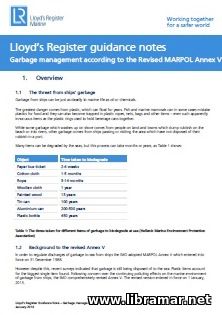 The Annex V to MARPOL Convention entered into force on 31 December 1977. But, some of the recently conducted surveys revealed the facts that some garbage is still disposed of to the sea from the ships. And plastic garbage accounts for the largest single item found. Then, IMO revised this Annex and it's revised edition entered into force on 1 January 2013.
The present Guidance Notes were officially released by Lloyd's Register of Shipping with the intention to make the requirements of the subject Annex earlier to understand and, consequently, to comply with. It is obvious today that the garbage thrown from the vessels can be deadly to marine life in the same was as oil or chemicals. The maximum danger comes from plastic stuff since plastic can float for years and get swallowed by fish or marine mammals mistaking it for food; in addition to that, fish can easily become trapped in plastic bags, nets and ropes. And, while some of the garbage comes from the people on land, significant part of it comes from vessels.
Of course, many items will be degraded by the sea water; however, this is a very time consuming process - it can take months or even years, and, again, plastic is the worst one - it would take about 450 years to get it degraded by sea...
« 1 2 ... 26 27 28 29 30 » |







